Serendip is an independent site partnering with faculty at multiple colleges and universities around the world. Happy exploring!
Reality--Stranger Than Fiction: A Cyberpunk Distortion of Guiyu, China

"Nature has not died, it has been conquered"
CYBERPUNK
Cybernetics: The science of replacing human functions with computerized ones.
Punk: Music genre from the 1970s and 1980s known for its staccato lyrics and beats.
For this project, I explored the lives of the inhabitants of Guiyu, China through the lens of the Cyberpunks. Guiyu is a small town in Northern China ridden with "e-waste"--discarded electronic devices and components exported from America and other technologically advanced countries. "Cyberpunk" is a science fiction subgenre of the 1980s that focused on the "high tech and low life." Cyberpunk literature offered a new "technoculture" that dealt directly with blurring the lines between fiction and reality. Technology, for the Cyberpunks, was seen as an "omnipresent force" that was portrayed in their works as neither "good" nor "evil." This takeover of technology was accepted as reality, as the "force" could not be avoided--technology is in the every day, becoming more and more humanlike, and humans becoming more and more machine-like.
Here, I present my own fusion of fiction and reality using images of Guiyu, China combined with images from 2 of the "7 Natural Wonders" of North America. The first image in the series is "real," taken by reporters from TIME. The second image was created using the "masking" tool in Photoshop. Though unintentional, I was fascinated by the power of the image. The masking" or "blurring" of human and machine shows the individuals physically connected with the technology--as though the two are one, extensions of each other. Lastly, the third image in the series displays the e-waste as a part of nature. Here, the discarded waste of China superimposes itself on the pristine landscapes of North America, a country that is one of the largest contributors to the exportation of e-waste.
Guiyu, China + Mount McKinley (Alaska, USA)
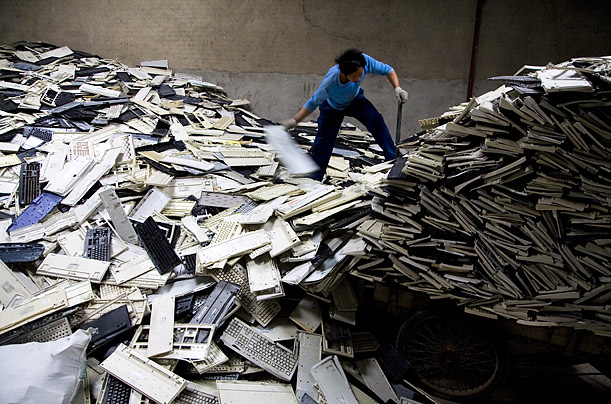
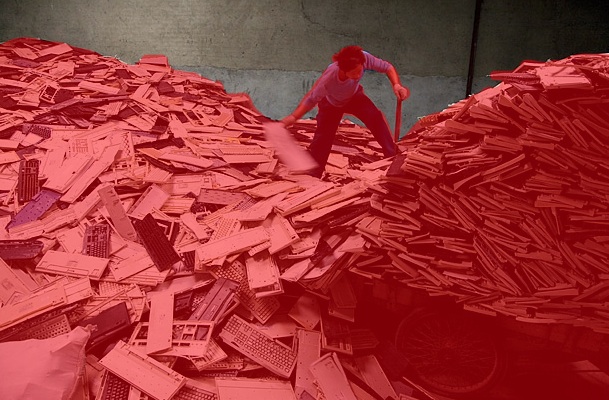
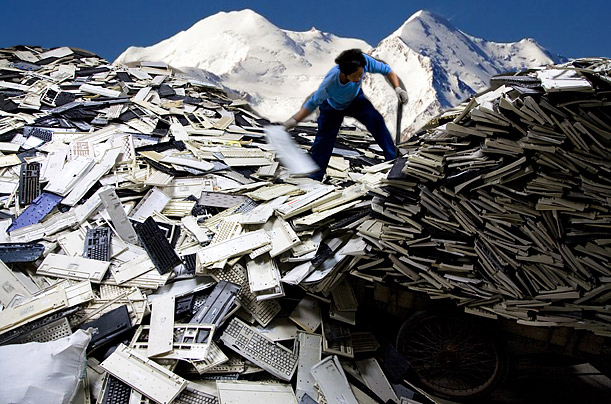
Guiyu, China + Great Blue Hole (Belize/USA)
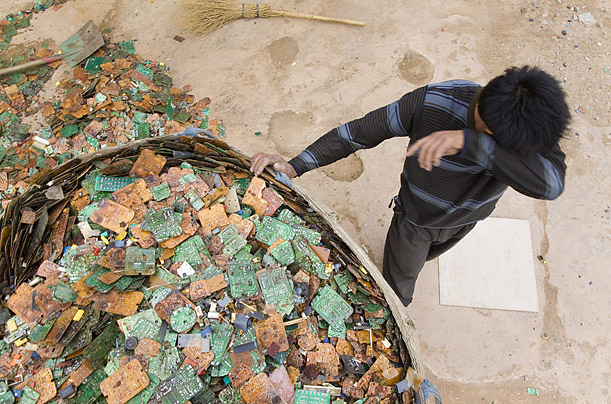
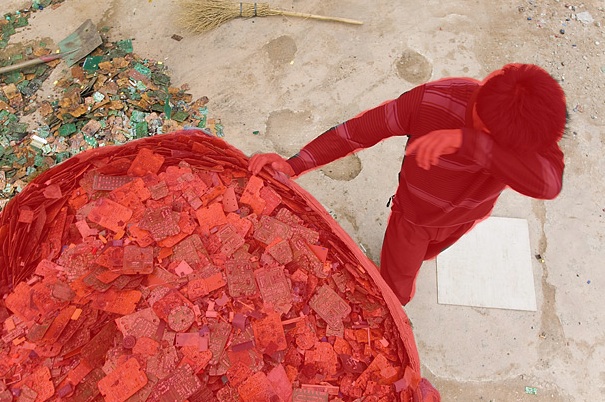
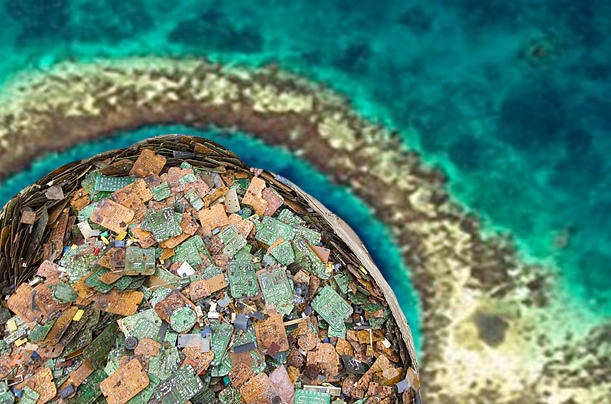



Comments
Thank you for your comment,
Thank you for your comment, Anne, and I will definitely check out the exhibit you mentioned (hadn't heard of it before!)
I think my project is an extension of Cara's work by commenting on the lives of the Guiyu inhabitants in a more abstract way, using the eyes of the Cyberpunks. The staccato lyrics and beats of the punk music that inspired Cyberpunk writers were used to irritate rather than entertain, they were jarring and unfamiliar, so Cyberpunks utilized a fast-paced, cacophonous writing style in their works. My images evoke a similar sensation--though intriguing, the apparent Photoshopped style is startling, especially when compared to the original photograph. When creating the images, I felt as though I was a Cyberpunk--I was breaking the code of the photograph, foiling the eyes, and disorienting the viewer. I guess one could say the process of using Photoshop was my way of highlighting Cyberpunks (also, the second image can be interpreted from the perspective of a Cyberpunk character), whereas the final product can be seen as more of a comment on e-waste. I was fascinated by how the original photographs of Guiyu appeared to be incredibly Cyberpunk without any elements of fiction, so I wanted to distort them even further by dismantling two realities (Guiyu + America) and forcing them together in a surreal way (the third image).
from the point of view of lightning
Hello, Kelliot
I liked much of his work involving cyberpunk ideas and junk. I believe that somehow our work dialogue.
I'm having an exhibition here in southern Brazil, entitled "from the point of view of lightning" and the technique I used was based on two main proposals, the first refers to the paintings found in caves, Neolithic. And second, inspired by the experiences of David Smith in the 40's, who also used the method of the negative image (automotive spray painting).
In the works I have used variants of these techniques, combined with objects that are immersed in our reality and that could be problematized. So, I used the "e-waste" because it is a direct result of techno-cultural consumption driven by catastrophic technological singularity.
If you want to check out some work, I can send you some pictures by email.
Seeya
Fabiano Gummo
Representing E-Waste
kelliott--
i am blown away by your representations. They are VERY POWERFUL, very rich, and very much put me in mind of the exhibit I saw @ Cantor Fitzgerald @ this time last year (did you see it?): Chris Jordan's Running the Numbers; “Employing themes such as the near versus the far, and the one versus the many, it raised questions about the roles and responsibilities we each play as individuals in a collective that is increasingly enormous, incomprehensible, and overwhelming.” Check it out...
and then tell me how this relates to your original project, highlighting the work of cyberpunks. How is this an example of "the staccato lyrics and beats" of cyberpunk? Or did that turn out just to be a stepping off place to a different exercise, that of representing Cara's work on E-Waste, Technology and Information?